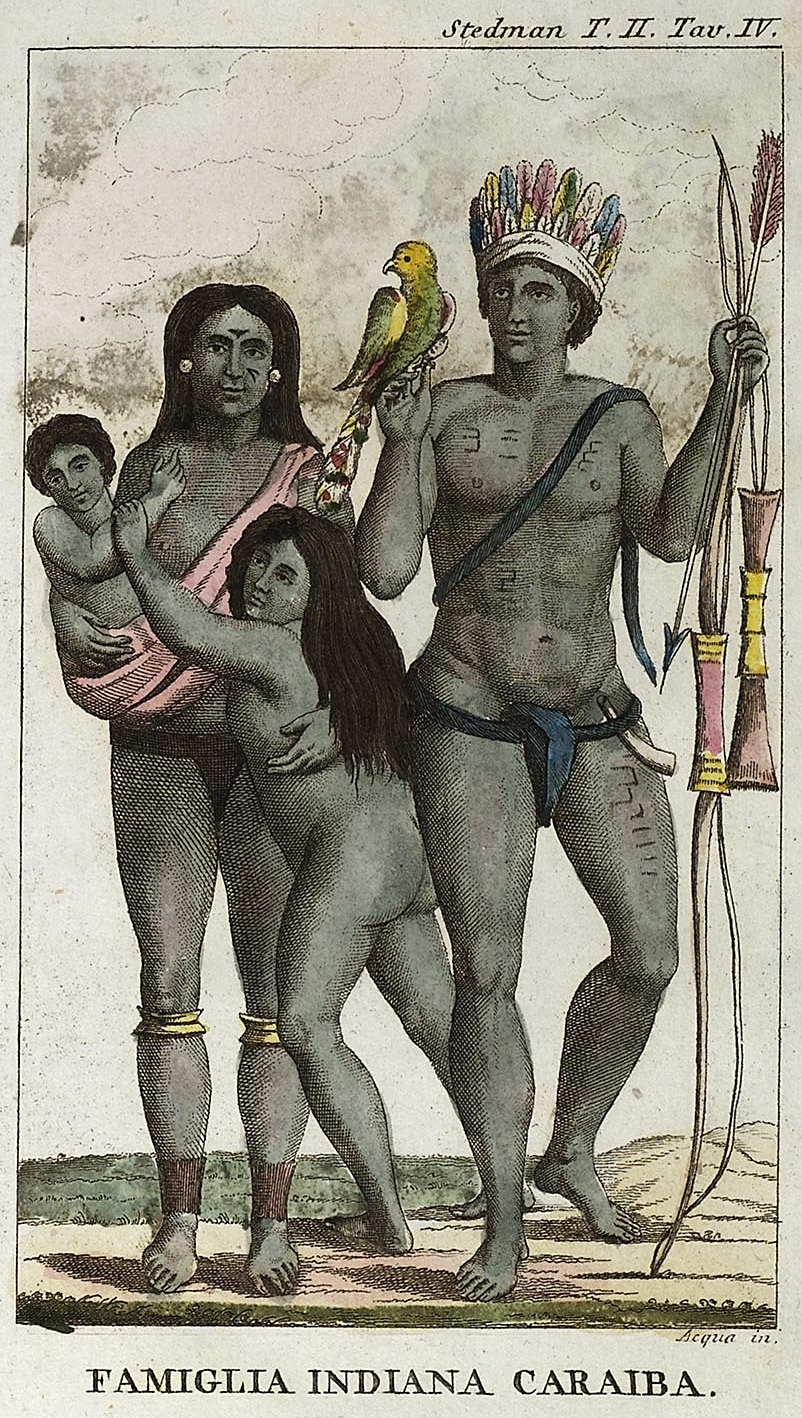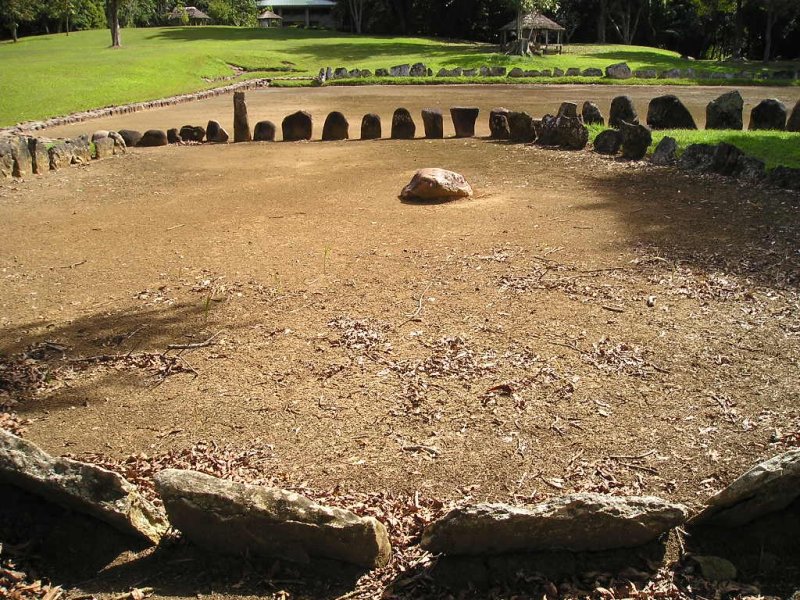|
Igneri
The Igneri were an Indigenous Arawak people of the southern Lesser Antilles in the Caribbean. Historically, it was believed that the Igneri were conquered and displaced by the Island Caribs or Kalinago in an invasion some time before European colonization of the Americas, European contact. However, linguistic and archaeological studies in the 20th century have led scholars to more nuanced theories as to the fate of the Igneri. The Igneri spoke an Arawakan language, Arawakan language which transitioned into the Kalinago language. History The Caribbean was populated in various waves, several of which produced varying and often successive archaeological cultures. It is not clear which sites and cultures may be related to the Igneri. Archaeologist Irving Rouse associated them with the Suazoid culture, which emerged around AD 1000 in the Lesser Antilles as a continuation of the earlier Saladoid culture. The Suazoid culture lasted until around 1450, which may reflect the transition from ... [...More Info...] [...Related Items...] OR: [Wikipedia] [Google] [Baidu] [Amazon] |
Kalinago Language
The Kalinago language, also known as Island Carib and Igneri (Iñeri, Inyeri, etc.), was an Arawakan language historically spoken by the Kalinago of the Lesser Antilles in the Caribbean. Kalinago proper became extinct by about 1920 due to population decline and colonial period deportations resulting in language death, but an offshoot survives as Garifuna, primarily in Central America. Despite being known as Island Carib, the language was not closely related to the Carib language of the mainland Caribs. Instead, it appears to have been a development of the Arawakan language spoken by the islands' earlier Igneri inhabitants, which incoming Caribs adopted in the pre-Columbian era. During the French colonial period, Carib men also spoke a Cariban-derived pidgin amongst themselves. History At the time of European contact, the Kalinago lived throughout the Windward Islands of the Lesser Antilles, from Guadeloupe to Grenada. Contemporary traditions indicated the Kalinago were re ... [...More Info...] [...Related Items...] OR: [Wikipedia] [Google] [Baidu] [Amazon] |
Island Carib Language
The Kalinago language, also known as Island Carib and Igneri (Iñeri, Inyeri, etc.), was an Arawakan language historically spoken by the Kalinago of the Lesser Antilles in the Caribbean. Kalinago proper became extinct by about 1920 due to population decline and colonial period deportations resulting in language death, but an offshoot survives as Garifuna, primarily in Central America. Despite being known as Island Carib, the language was not closely related to the Carib language of the mainland Caribs. Instead, it appears to have been a development of the Arawakan language spoken by the islands' earlier Igneri inhabitants, which incoming Caribs adopted in the pre-Columbian era. During the French colonial period, Carib men also spoke a Cariban-derived pidgin amongst themselves. History At the time of European contact, the Kalinago lived throughout the Windward Islands of the Lesser Antilles, from Guadeloupe to Grenada. Contemporary traditions indicated the Kalinago were related ... [...More Info...] [...Related Items...] OR: [Wikipedia] [Google] [Baidu] [Amazon] |
Kalinago
The Kalinago, also called Island Caribs or simply Caribs, are an Indigenous people of the Lesser Antilles in the Caribbean. They may have been related to the Mainland Caribs (Kalina) of South America, but they spoke an unrelated language known as Kalinago or Island Carib. They also spoke a pidgin language associated with the Mainland Caribs. At the time of Spanish contact, the Kalinago were one of the dominant groups in the Caribbean (the name of which is derived from "Carib", as the Kalinago were once called). They lived throughout north-eastern South America, Trinidad and Tobago, Barbados, the Windward Islands, Dominica, and possibly the southern Leeward Islands. Historically, it was thought their ancestors were mainland peoples who had conquered the islands from their previous inhabitants, the Igneri. However, linguistic and archaeological evidence contradicts the notion of a mass emigration and conquest; the Kalinago language appears not to have been Cariban, but like ... [...More Info...] [...Related Items...] OR: [Wikipedia] [Google] [Baidu] [Amazon] |
Igneri Language
The Kalinago language, also known as Island Carib and Igneri (Iñeri, Inyeri, etc.), was an Arawakan language historically spoken by the Kalinago of the Lesser Antilles in the Caribbean. Kalinago proper became extinct by about 1920 due to population decline and colonial period deportations resulting in language death, but an offshoot survives as Garifuna, primarily in Central America. Despite being known as Island Carib, the language was not closely related to the Carib language of the mainland Caribs. Instead, it appears to have been a development of the Arawakan language spoken by the islands' earlier Igneri inhabitants, which incoming Caribs adopted in the pre-Columbian era. During the French colonial period, Carib men also spoke a Cariban-derived pidgin amongst themselves. History At the time of European contact, the Kalinago lived throughout the Windward Islands of the Lesser Antilles, from Guadeloupe to Grenada. Contemporary traditions indicated the Kalinago were related t ... [...More Info...] [...Related Items...] OR: [Wikipedia] [Google] [Baidu] [Amazon] |
Island Caribs
The Kalinago, also called Island Caribs or simply Caribs, are an Indigenous peoples of the Caribbean, Indigenous people of the Lesser Antilles in the Caribbean. They may have been related to the Kalina people, Mainland Caribs (Kalina) of South America, but they spoke an unrelated language known as Kalinago language, Kalinago or Island Carib. They also spoke a pidgin language associated with the Mainland Caribs. At the time of Spanish colonization of the Americas, Spanish contact, the Kalinago were one of the dominant groups in the Caribbean (the name of which is derived from "Carib", as the Kalinago were once called). They lived throughout north-eastern South America, Trinidad and Tobago, Barbados, the Windward Islands, Dominica, and possibly the southern Leeward Islands. Historically, it was thought their ancestors were mainland peoples who had conquered the islands from their previous inhabitants, the Igneri. However, linguistic and archaeological evidence contradicts the not ... [...More Info...] [...Related Items...] OR: [Wikipedia] [Google] [Baidu] [Amazon] |
Indigenous Peoples Of The Caribbean
At the time of first contact between Europe and the Americas, the Indigenous peoples of the Caribbean included the Taíno of the northern Lesser Antilles, most of the Greater Antilles and the Bahamas, the Kalinago of the Lesser Antilles, the Ciguayos, Ciguayo and Macorix language, Macorix of parts of Hispaniola, and the Guanahatabey of western Cuba. The Kalinago have maintained an identity as an Indigenous people, with a reserved territory in Dominica. Introduction Some scholars consider it important to distinguish the Taíno from the neo-Taíno nations of Cuba, Puerto Rico, and Hispaniola, and the Lucayan people, Lucayan of the Bahamas and Jamaica. Linguistically or culturally these differences extended from various cognates or types of canoe: canoa, piragua, cayuco to distinct languages. Languages diverged even over short distances. Previously these groups often had distinctly non-Taíno deities such as the goddess Jagua. Strangely enough the god Teju Jagua is a major demon of ... [...More Info...] [...Related Items...] OR: [Wikipedia] [Google] [Baidu] [Amazon] |
Caribbean
The Caribbean ( , ; ; ; ) is a region in the middle of the Americas centered around the Caribbean Sea in the Atlantic Ocean, North Atlantic Ocean, mostly overlapping with the West Indies. Bordered by North America to the north, Central America to the west, and South America to the south, it comprises numerous List of Caribbean islands, islands, cays, islets, reefs, and banks. It includes the Lucayan Archipelago, Greater Antilles, and Lesser Antilles of the West Indies; the Quintana Roo Municipalities of Quintana Roo#Municipalities, islands and Districts of Belize#List, Belizean List of islands of Belize, islands of the Yucatán Peninsula; and the Bay Islands Department#Islands, Bay Islands, Miskito Cays, Archipelago of San Andrés, Providencia and Santa Catalina, Archipelago of San Andrés, Providencia, and Santa Catalina, Corn Islands, and San Blas Islands of Central America. It also includes the coastal areas on the Mainland, continental mainland of the Americas bordering the ... [...More Info...] [...Related Items...] OR: [Wikipedia] [Google] [Baidu] [Amazon] |
Taíno
The Taíno are the Indigenous peoples of the Caribbean, Indigenous peoples of the Greater Antilles and surrounding islands. At the time of European contact in the late 15th century, they were the principal inhabitants of most of what is now The Bahamas, Cuba, the Dominican Republic, Haiti, Jamaica, Puerto Rico, and the northern Lesser Antilles. The Lucayan people, Lucayan branch of the Taíno were the first New World peoples encountered by Christopher Columbus, in the Lucayan Archipelago, Bahama Archipelago on October 12, 1492. The Taíno historically spoke an Arawakan languages, Arawakan language. Granberry and Vescelius (2004) recognized two varieties of the Taino language: "Classical Taino", spoken in Puerto Rico and most of Hispaniola, and "Ciboney Taino", spoken in the Bahamas, most of Cuba, western Hispaniola, and Jamaica. They lived in agricultural societies ruled by caciques with fixed settlements and a Matrilineality, matrilineal system of kinship and inheritance. Taíno ... [...More Info...] [...Related Items...] OR: [Wikipedia] [Google] [Baidu] [Amazon] |
European Colonization Of The Americas
During the Age of Discovery, a large scale colonization of the Americas, involving a number of European countries, took place primarily between the late 15th century and the early 19th century. The Norse explored and colonized areas of Europe and the North Atlantic, colonizing Greenland and creating a short-term settlement near the northern tip of Newfoundland circa 1000 AD. However, due to its long duration and importance, the later colonization by the European colonial powers of the Americas, after Christopher Columbus’s voyages, is more well-known. During this time, the European colonial empires of Spain, Portugal, Great Britain, France, Russia, the Netherlands, Denmark, and Sweden began to explore and claim the Americas, its natural resources, and human capital, leading to the displacement, disestablishment, enslavement, and even genocide of the Indigenous peoples in the Americas, and the establishment of several settler colonial states. The rapid rate at which so ... [...More Info...] [...Related Items...] OR: [Wikipedia] [Google] [Baidu] [Amazon] |
Cultural History Of Puerto Rico
Culture ( ) is a concept that encompasses the social behavior, institutions, and Social norm, norms found in human societies, as well as the knowledge, beliefs, arts, laws, Social norm, customs, capabilities, Attitude (psychology), attitudes, and habits of the individuals in these groups.Tylor, Edward. (1871). ''Primitive Culture''. Vol 1. New York: J. P. Putnam's Son Culture often originates from or is attributed to a specific region or location. Humans acquire culture through the learning processes of enculturation and socialization, which is shown by the diversity of cultures across societies. A cultural norm codifies acceptable conduct in society; it serves as a guideline for behavior, dress, language, and demeanor in a situation, which serves as a template for expectations in a social group. Accepting only a monoculturalism, monoculture in a social group can bear risks, just as a single species can wither in the face of environmental change, for lack of functional respo ... [...More Info...] [...Related Items...] OR: [Wikipedia] [Google] [Baidu] [Amazon] |






